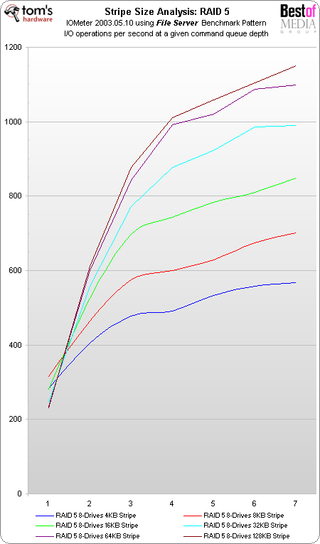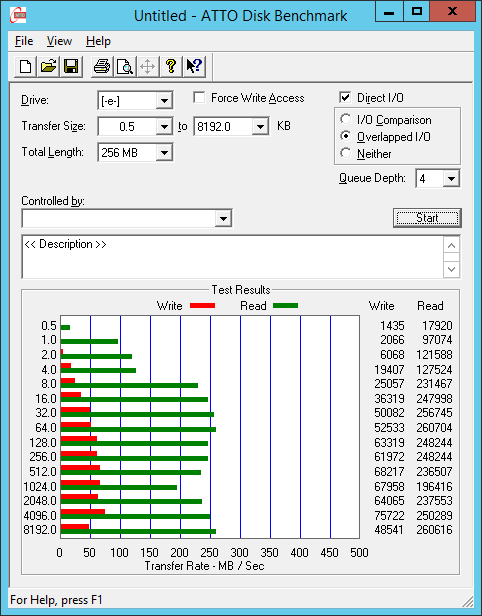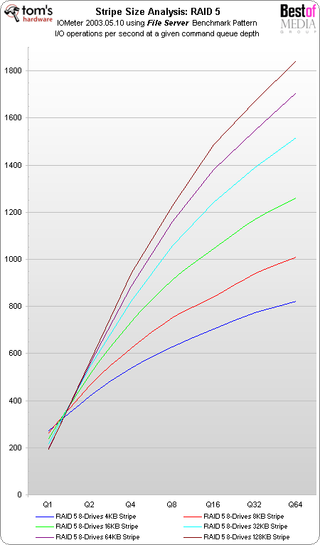Table of Content
Chances of losing information in a RAID 1 get more and more lower the extra drives you have, but it additionally makes it very costly per GB. I am about to construct a server with RAID utilizing Lenovo ThinkServer TS440. I have four 4TB HDD and two 2.5″ 240GB SSD available. The apparent choice for me is to separate OS from knowledge.
On some controllers corresponding to HP ones, all available choices could be selected even when there aren’t sufficient disks obtainable. With 2 disks, selecting RAID 1+0 effectively gives you a RAID 1 set. You can get 1+0 on two disk using two partitions. From every little thing I am seeing on comparisons between both, should you only have four disks, the fault tolerance and efficiency are the identical. If you may have 6 disks, then 1+0 offers higher fault tolerance, and 0+1 provides greater speed. There are lots of heated discussions about that on the net.
Benefits Of Raid 5
These are often known as "RAID levels", and we're going to discover what they are and their characteristics in the following sections. Calculates the usable house, area required for information safety, and unused house for different RAID ranges. The device shortly finds out the useful capacity for a given configuration. The system will allow you to calculate the probabilities for information loss in a given variety of disks in numerous RAID levels. As a reminder, the RAID 5 requires a minimal of 3 onerous drives. The RAID 5 spare has four disks; the fourth unit getting used as a spare.

There isn't any comparable performance acquire for writing, as the RAID controller writes every block to a single disk at a time and calculates the parity information for each full stripe. You may assume to add extra disks to a RAID 1 array, however this can have the effect of dramatically increasing the cost per usable capacity. If you had three mirrored drives, then two disks might fail without data loss. However, the usable dimension would solely be a 3rd of the total capability of the disks. Other RAID levels offer glorious reliability at much less value.
What Is Raid 5? Raid 5 Necessities, Advantages, And Calculator
More importantly, you'll have the ability to know the information about RAID 5 vs RAID 1. In addition, to protect your data, using MiniTool ShadowMaker to back up your onerous drive is critical. If you have any confusion about this publish, go away a remark below or ship an email to . After the method is completed, then you've backed up your exhausting drive efficiently. So you ought to use the backup image to revive the hard drive if it fails.
I ran four full passes , having it confirm all information, which implies that greater than 32TB of information was read and not using a single error. I installed 4 of the 7K2000 drives into my Mac Pro Nehalem, configuring them as a RAID 0 stripe, my curiosity being most speed to detect read errors. Therefore, it's odd that we ought to always swap to viewing RAID efficiency as a perform of spindle depend.
Raid 5 Vs Raid 10: Disk Utilization
As disk sizes have elevated exponentially, it does beg the query, though; is RAID 5 nonetheless reliable? To answer this query, we’ll first have to speak about what RAID 5 precisely is, it’s working mechanisms, functions, and flaws. These RAID ranges combine the beforehand discussed RAID 1, 5, and 6 with striping at a higher level. Let's start by looking on the diagram for RAID 10 (1+0).
Stripe measurement, because the name implies, refers to the sum of the scale of all the strips or chunks in the stripe. Generally, hardware RAID controllers use stripe measurement, however some RAID implementations also use chunk dimension. Please notice that whatever RAID configuration you select, you still need to backup the information. Preferably to magnetic tape, however you can also use on-line distant backup or a second RAID array.
The RAID 5 can assist one-drive failure, which signifies that the RAID 5 can still run when one hard drive is failing. RAID 5, on the opposite hand, can also be a configuration that's geared toward guaranteeing fault tolerance. However, this configuration doesn't mirror or duplicate information. Instead, it makes use of striping, distributed parity, and checksum. This signifies that in this array, data is similarly striped throughout quite a few drives to that of RAID. RAID 5 arrays use block-level striping with distributed parity.
In raid zero, it will load block 1 and 2 on the same time, then block 3 and 4. This is oversimplified, however that’s why you get sooner performance in raid zero. But if you lose a disk, you solely have half your file. What you are recommending won't improve speeds by a lot, except you're loading to recordsdata in separate folders.
How To Verify Your Onerous Disk House In Home Windows
It often makes use of two drives but can be extra if required. This process of data mirroring ensures you could nonetheless entry your knowledge in the occasion of disks or drives failure. RAID 6 is a great substitute for RAID 5 as a end result of it's a lot safer.

This is finished with the belief that you’ll both restore from a backup or recover the information from each drive individually. If you’ve often been disk scrubbing, you’re in all probability good. But should you haven’t been checking for errors, there’s a danger of encountering UREs in the course of the rebuilding course of, as one of the disks within the array has failed simply now. Different RAID ranges use different algorithms to calculate parity information. RAID 5 specifically makes use of the Exclusive OR operator on each byte of data.
You don’t need to confuse the data with the parity xor. You can't read the data of one particular person drive that once belonged to a set of RAID disks. In your new machine, the two disks must be configured identically to how they have been configured in the old setup in order to entry the information. Given your present requirement a mirroring setup with 2 big disks, corresponding to 2 6 Tb drives, makes essentially the most sense to me. In case a drive fails, data wouldn't have to be rebuild, they just need to be copied to the alternative drive. The software program to carry out the RAID-functionality and management the drives can both be located on a separate controller card or it can merely be a driver.

RIAD 5 is more suitable if you want high capability utilization, whereas RAID 6 is healthier if you'd like higher fault tolerance. To study more details about RAID 5 vs RAID 6, it is recommended to learn this post - RAID 5 VS RAID 6 on Benefits, Performance, and Application. This is as a result of with RAID 5, losing disks will increase the chance of the array. If the array has giant drives, the array will most probably lose another drive and then lose data. To sum up, this post has introduced what the RAID 1 and RAID 5 are.
If you run benchmark software to measure the performance of striped SSD drives, there's a significant speed enhance. Many declare nonetheless that in real world usage, the advantage is insignificant and doesn’t justify the information security risk. A storage box consists of an array of 6 disks, 1 TB every and the effective storage capability, based mostly on the RAID level used is.


No comments:
Post a Comment